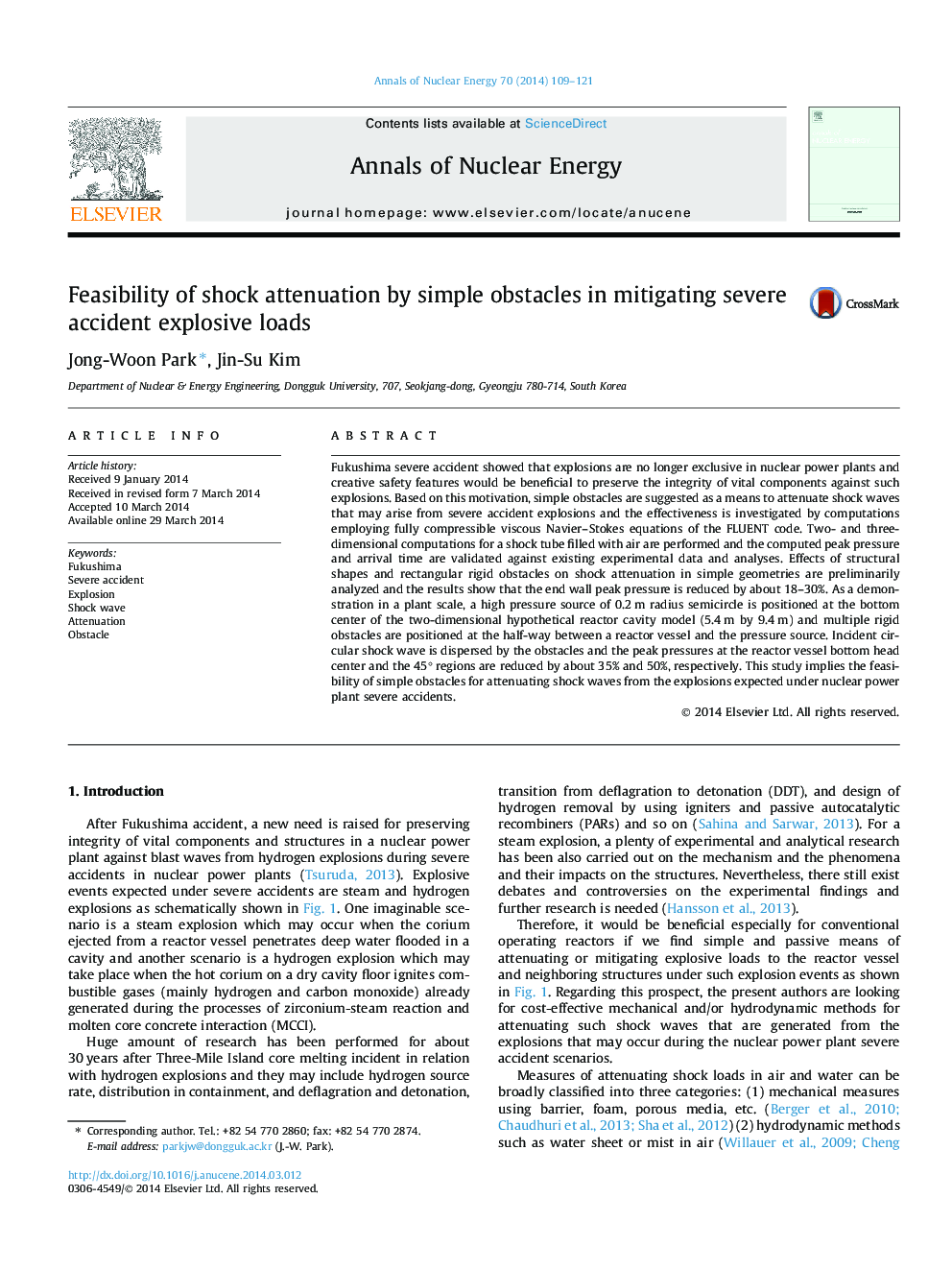| Article ID | Journal | Published Year | Pages | File Type |
|---|---|---|---|---|
| 1728316 | Annals of Nuclear Energy | 2014 | 13 Pages |
Abstract
Fukushima severe accident showed that explosions are no longer exclusive in nuclear power plants and creative safety features would be beneficial to preserve the integrity of vital components against such explosions. Based on this motivation, simple obstacles are suggested as a means to attenuate shock waves that may arise from severe accident explosions and the effectiveness is investigated by computations employing fully compressible viscous Navier-Stokes equations of the FLUENT code. Two- and three-dimensional computations for a shock tube filled with air are performed and the computed peak pressure and arrival time are validated against existing experimental data and analyses. Effects of structural shapes and rectangular rigid obstacles on shock attenuation in simple geometries are preliminarily analyzed and the results show that the end wall peak pressure is reduced by about 18-30%. As a demonstration in a plant scale, a high pressure source of 0.2 m radius semicircle is positioned at the bottom center of the two-dimensional hypothetical reactor cavity model (5.4 m by 9.4 m) and multiple rigid obstacles are positioned at the half-way between a reactor vessel and the pressure source. Incident circular shock wave is dispersed by the obstacles and the peak pressures at the reactor vessel bottom head center and the 45° regions are reduced by about 35% and 50%, respectively. This study implies the feasibility of simple obstacles for attenuating shock waves from the explosions expected under nuclear power plant severe accidents.
Related Topics
Physical Sciences and Engineering
Energy
Energy Engineering and Power Technology
Authors
Jong-Woon Park, Jin-Su Kim,
